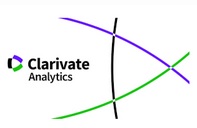Guidelines for Reporting Systematic Reviews and Meta-analyses
Abstract
Meta-analysis is an essential methodology that allows researchers to synthesize the scientific evidence available on a given research question. Due to its wide applicability in most applied research fields, it is really important that meta-analyses be written and reported appropriately. In this paper we propose some guidelines to report the results of a meta-analysis in a scientific journal as Annals of Psychology. Concretely, the structure for reporting a meta-analysis following its different stages is detailed. In addition, some recommendations related to the usual tasks when conducting a meta-analysis are provided. A recent meta-analysis focused on the psychological field is used to illustrate the guidelines proposed. Finally, some concluding remarks are presented.
Downloads
-
Abstract3803
-
PDF (Español (España))4456
-
PDF4456
-
Authors and affiliations811
References
APA Publications & Communications Board Working Group on Journal Article Reporting Standards. (2008). Reporting standards for research in psychology: Why do we need them? What might they be? American Psychologist, 63, 839-851. doi: 10.1037/0003-066X.63.9.839
Borenstein, M., Hedges L. V., Higgins, J. P. T., & Rothstein, H. R. (2010). A basic introduction to fixed-effect and random-effects models for meta-analysis. Research Synthesis Methods, 1, 97–111. doi:https://doi.org/10.1002/jrsm.12
Borenstein, M., Hedges L. V., Higgins, J. P. T., & Rothstein, H. R. (2014). Comprehensive Meta-Analysis (Vers. 3.3). Englewood, NJ: Biostat.
Botella, J., & Gambara, H. (2006). Doing and reporting a meta-analysis. International Journal of Clinical and Health Psychology, 6, 425-440.
Botella, J., & Sánchez-Meca, J. (2015). Meta-análisis en ciencias sociales y de la salud [Meta-analysis in social and health sciences]. Madrid, Spain: Síntesis.
Cafri, G., Kromrey, J. D., & Brannick, M. T. (2010). A meta-meta-analysis: Empirical review of statistical power, type I error rates, effect sizes, and model selection of meta-analyses published in psychology. Multivariate Behavioral Research, 45, 239-270.
Cook, D.J., Sackett, D.L., & Spitzer, W.O. (1995). Methodologic guidelines for systematic reviews of randomized control trials in health care from the Potsdam consultation on meta-analysis. Journal of Clinical Epidemiology, 48, 167-171.
Duval, S., & Tweedie, R. (2000). Trim and fill: a simple funnel-plot-based method of testing and adjusting for publication bias in meta-analysis. Biometrics, 56, 455-463. doi: 10.1111/j.0006-341X.2000.00455.x
Egger, M., Smith, G. D., Schneider, M., & Minder, C. (1997). Bias in meta-analysis detected by a simple, graphical test. British Medical Journal, 315, 629-634.
Glass, G. V. (1976). Primary, secondary, and meta-analysis of research. Educational Researcher, 5, 3-8.
Hedges, L. V., & Olkin, I. (1985). Statistical methods for meta-analysis. Orlando, FL: Academic Press.
Hedges, L. V., & Vevea, J. L. (1998). Fixed- and random-effects models in meta-analysis. Psychological Methods, 3, 486–504. doi: https:// doi.org/10.1037/1082-989X.3.4.486
Higgins, J. P. T., & Thompson, S. G. (2002). Quantifying heterogeneity in a meta-analysis. Statistics in Medicine, 21, 1539–1558. doi: https://doi.org/10.1002/sim.1186
Huedo-Medina, T. B., Sánchez-Meca, J., Marín-Martínez, F., & Botella, J. (2006). Assessing heterogeneity in meta-analysis: Q statistic or I2 index? Psychological Methods, 11, 193–206.
Hutton, B., Salanti, G., Caldwell, D. M., Chaimani, A., Schmid, C. H., Cameron, C., ... & Mulrow, C. (2015). The PRISMA Extension Statement for Reporting of Systematic Reviews Incorporating Network Meta-analyses of Health Care Interventions: Checklist and Explanations. Annals of Internal Medicine, 162, 777-784.
Iniesta-Sepúlveda, M., Rosa-Alcázar, A. I., Sánchez-Meca, J., Parada-Navas, J. L., & Rosa-Alcázar, Á. (2017). Cognitive-behavioral high parental involvement treatments for pediatric obsessive-compulsive disorder: A meta-analysis. Journal of Anxiety Disorders, 49, 53-64.
Konstantopoulos, S., & Hedges, L. V. (2009). Analyzing effect sizes: Fixed-effects models. In H. Cooper, L. V. Hedges, & J. C. Valentine (Eds.), The handbook of research synthesis and meta-analysis (2nd ed., pp. 279–293). New York, NY: Russell Sage Foundation.
Liberati, A., Altman, D. G., Tetzlaff, J., Mulrow, C., …, Moher, D. (2009). The PRISMA statement for reporting systematic reviews and meta-analyses of studies that evaluate health care interventions: explanation and elaboration. Journal of Clinical Epidemiology, 62, e1-e34.
Light, R. J., & Pillemer, D. B. (1984). Summing up. The science of reviewing research. Cambridge, MA: Harvard University Press.
López-López, J. A., Marín-Martínez, F., Sánchez-Meca, J., Van den Noortgate, W., & Viechtbauer, W. (2014). Estimation of the predictive power of the model in mixed-effects meta-regression: A simulation study. British Journal of Mathematical and Statistical Psychology, 67, 30-48. doi: 10.1111/bmsp.12002
López-López, J. A., Van den Noortgate, W., Tanner-Smith, E. E., Wilson, S. J., & Lipsey, M. W. (2017). Assessing meta-regression methods for examining moderator relationships with dependent effect sizes: A Monte Carlo simulation. Research Synthesis Methods, 8, 435–450.
Moher, D., Cook, D. J., Eastwood, S., Olkin, I., Rennie, D., & Stroup, D.F. (1999). Improving the quality of reports of meta-analyses of randomised controlled trials: The QUOROM statement. Quality of Reporting of Meta-analyses. Lancet, 354, 1896-1900.
Moher, D., Liberati, A., Tetzlaff, J., Altman, D. G., & Prisma Group. (2009). Preferred reporting items for systematic reviews and meta-analyses: The PRISMA statement. PLoS Medicine, 6, e1000097.
Morris, S. B. (2008). Estimating effect sizes from pretest-posttest-control group designs. Organizational Research Methods, 11, 364–386. doi: https://doi.org/10.1177/1094428106291059
Panic, N., Leoncini, E., de Belvis, G., Ricciardi, W., & Boccia, S. (2013). Evaluation of the endorsement of the Preferreed Reporitng Items for Systematic Reviews and Meta-Analysis (PRISMA) statement on the quality of published systematic review and meta-analyses.
PLOS ONE, 8(12). doi: 10.1371/journal.pone.0083138.
Raudenbush, S. W. (1994). Random effects models. In H. Cooper, & L. V. Hedges (Eds.), The handbook of research synthesis (pp. 301–321). New York: Russell Sage Foundation.
Raudenbush, S. W. (2009). Analyzing effect sizes: Random-effects models. In H. Cooper, L. V. Hedges, & J. C. Valentine (Eds.), The handbook of research synthesis and meta-analysis (2nd ed., pp. 295–315). New York: Russell Sage Foundation.
Review Manager (2014). RevMan (Version 5.3) [Computer software]. Copenhagen, Denmark: The Nordic Cochrane Centre, The Cochrane Collaboration.
Rothstein, H. R., Sutton, A. J., & Borenstein, M. (Eds.) (2005). Publication bias in meta-analysis: Prevention, assessment, and adjustments. New York: Wiley.
Rubin, D. B. (1992). Meta-analysis: Literature synthesis or effect-size surface estimation? Journal of Educational Statistics, 17, 363-374. doi: 10.3102/10769986017004363
Rubio-Aparicio, M., Marín-Martínez, F., Sánchez-Meca, J., & López-López, J.A. (in press). A methodological review of meta-analyses about the effectiveness of clinical psychology treatments. Behavior Research Methods. doi: 10.3758/s13428-017-0973-8
Rubio-Aparicio, M., Sánchez-Meca, J., López-López, J.A., Marín-Martínez, F., & Botella, J. (2017). Analysis of categorical moderators in mixed-effects meta-analysis: Consequences of using pooled versus separate estimates of the residual between-studies variances. British Journal of Mathematical and Statistical Psychology, 70, 439–456. doi: 10.1111/bmsp.12092
Sánchez-Meca, J., & Botella, J. (2010). Revisiones sistemáticas y meta-análisis: Herramientas para la práctica profesional [Systematic reviews and meta-analysis: Tools for practitioners]. Papeles del Psicólogo, 31, 7-17.
Sánchez-Meca, J., López-López, J. A., & López-Pina, J. A. (2013). Some recommended statistical analytic practices when reliability generalization (RG) studies are conducted. British Journal of Mathematical and Statistical Psychology, 66, 402-425.
Sánchez-Meca, J., López-Pina, J. A., Rubio-Aparicio, M., Marín-Martínez, F., Núñez-Núñez, R. M., López-García, J. J., & López-López, J. A. (2017, July). REGEMA: Propuesta de una guía para la realización y reporte de meta-análisis de generalización de la fiabilidad [REGEMA: Guidelines for conducting and reporting reliability generalization meta-analyses.]. Paper presented at the XV Congress of Methodology of the Social and Behavioral Sciences, Barcelona (Spain).
Sánchez-Meca, J. & Marín-Martínez, F. (1997). Homogeneity tests in meta-analysis: A Monte Carlo comparison of statistical power and Type I error. Quality and Quantity, 31, 385-399.
Sánchez-Meca, J. & Marín-Martínez, F. (2010). Meta-analysis in psychological research. International Journal of Psychological Research, 3, 151-163.
Sánchez-Meca, J., Marín-Martínez, F., & Chacón-Moscoso, S. (2003). Effect-size indices for dichotomized outcomes in meta-analysis. Psychological Methods, 8, 448-467.
Schmidt, F. L., Oh, I. S., & Hayes, T. L. (2009). Fixed‐versus random‐effects models in meta‐analysis: Model properties and an empirical comparison of differences in results. British Journal of Mathematical and Statistical Psychology, 62, 97-128.
Shea, B. J., Grimshaw, J. M., Wells, G. A., Boers, M., Andersson, N., Hamel, C., ... & Bouter, L. M. (2007). Development of AMSTAR: a measurement tool to assess the methodological quality of systematic reviews. BMC Medical Research Methodology, 7, 10.
Stewart, L. A., Clarke, M., Rovers, M., Riley, R. D., Simmonds, M., Stewart, G., & Tierney, J. F. (2015). Preferred reporting items for a systematic review and meta-analysis of individual participant data: the PRISMA-IPD statement. Journal of the American Medical Association, 313, 1657-1665.
Stroup, D. F., Berlin, J. A., Morton, S. C., Olkin, I., Williamson, G. D., Rennie, D., ... & Thacker, S. B. (2000). Meta-analysis of observational studies in epidemiology: A proposal for reporting. Journal of the American Medical Association, 283, 2008-2012.
Valentine, J. C., Cooper, H., Patall, E. A., Tyson, D., & Robinson, J. C. (2010). A method for evaluating research syntheses: The quality, conclusions, and consensus of 12 syntheses of the effects of after‐school programs. Research Synthesis Methods, 1, 20-38.
Viechtbauer, W. (2010). Conducting meta-analyses in R with the metafor package. Journal of Statistical Software, 36, 1–48.
About Copyright and Licensing, more details here.










